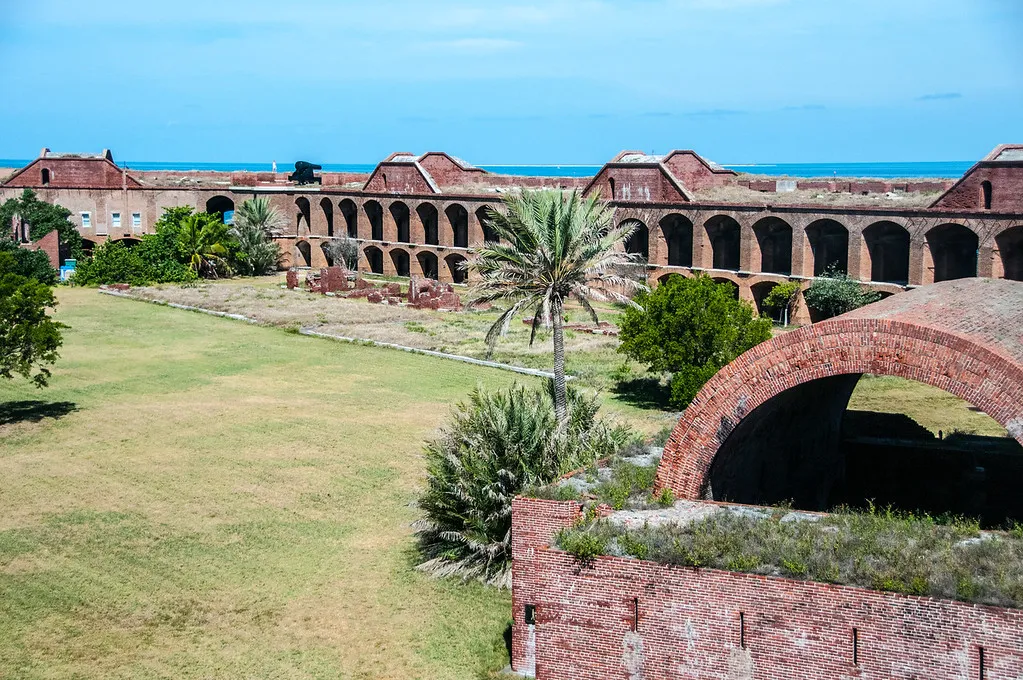The Dry Tortugas National Park is one of the least visited jewels, but surely one of the most unique of the US National Park tiara. For most, the highlight is a massive sentinel red brick redoubt, Fort Jefferson, which stands firm and in stark contrast to the brilliant blue skies and crystal clear waters of the Gulf of Mexico that surround it.
 |
| Dry Tortugas National Park |
Visiting Dry Tortugas on a day trip
The 100-square-mile Dry Tortugas National Park as a whole is 98% water, so the main ways to access the fort are via a floating plane or the more accessible Yankee Freedom III Ferry from Key West. Experienced sailors can also pilot their own boats there, or you can rent a boat. The ferry crosses the 70 miles to Fort Jefferson in just over two hours. During that time, a simple but hearty breakfast is served, and a guide prepares passengers with a history of the park's evolution, from the fort built between 1846 to 1875 to its designation as a national park in 1992.
 |
| Dry Tortugas National Park |
During most of the ferry trip, you can see a 360-degree view of the ocean to the horizon. If you are lucky you may be treated to sightings of dolphins, floating turtles, or other marine life. There is remarkable excitement among the passengers when the massive two-story, six-sided fort appears, which is made of 16 million bricks and stands out as the largest masonry building in the Western Hemisphere.
 |
| Dry Tortugas National Park |
The only land in the Dry Tortugas National Park is made up of seven islands, the largest of which is Garden Key, and 70% of which is now consumed by Fort Jefferson. Ponce de León discovered these islands in 1513 and discovered that they were full of turtles, which at that time were an excellent source of food and that they were replenishing themselves. They wrote down "Las Tortugas" on their maps so that future Spaniards would know that these islands were the period equivalent of modern fast food. Later, British sailors found the islands but noticed that there was no fresh water. So they added the word "dry" to give the area its unique, multilingual name.
